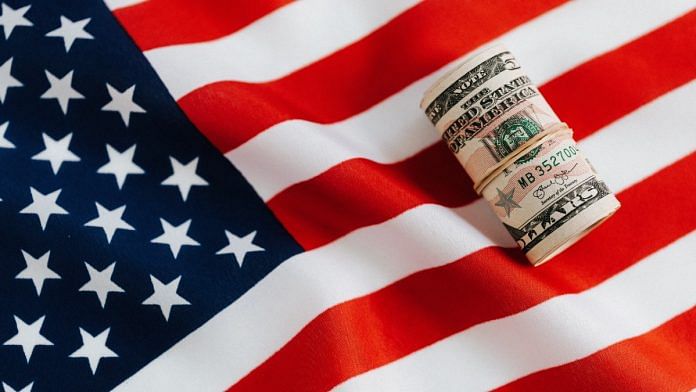San Francisco: The US “still cares” about its leadership position when it comes to international currency dominance, economist Darrell Duffie told ThePrint days before Prime Minister Narendra Modi’s visit to the UAE coincided with a flurry of headlines about “de-dollarisation”. Shortly after, the two countries signed a currency agreement allowing the use of the rupee and dirham for cross-border trade.
A month prior, foreign ministers of the BRICS grouping (Brazil, Russia, India, China and South Africa) issued a joint statement encouraging the use of local currencies in international trade, saying the world economy has been “complicated by sanctions and boycotts”.
To top it off, Russian Foreign Minister Sergey Lavrov had in mid-July appealed to ASEAN countries to ditch the dollar.
Be it the Middle East or Southeast Asia, countries across the world have started to trade in national currencies instead of the US dollar, albeit in relatively small proportions. China, Russia, Brazil, India, Kenya, Saudi Arabia, the UAE, some ASEAN nations and many others are now using local currencies in trade following the war in Ukraine.
But de-dollarisation does not imply the demise of the US dollar or a substantial shift away from it. The greenback continues to comprise approximately 59 percent of global foreign reserves and the Chinese renminbi isn’t exactly a close-second.
“If you’re thinking China is gaining ground — it’s only 2.6 percent,” said Duffie, the Adams Distinguished Professor of Management at Stanford University’s Graduate School of Business.
He, however, added, “Every time the US dollar is used less frequently by even a bit, that’s less influence that the US has and less benefit that US businesses, consumers and taxpayers have from dollar dominance.”
‘Separate theatres no longer a concept’
Officials from the US State Department revealed that they have expressed concerns about these developments with partners in Southeast Asia, but did not mention China’s push for wider usage of the renminbi.
Asked about Lavrov’s appeal to ASEAN countries to ditch the dollar, Matt Murray, the US Senior Official for Asia-Pacific Economic Cooperation (APEC), told a group of reporters in San Francisco on 12 July: “We have been working in APEC with Indonesia and other partners regarding concerns about Russia’s invasion of Ukraine and the economic impact that it’s had on the Indo-Pacific region.”
“Through those engagements, we’ve made our views quite clear…and our concerns about Russia’s activity in the region,” he added. Murray noted that the war in Ukraine has created “disruptions” in the Indo-Pacific, be it supply chains, food security, energy security, etc.
Additionally, Camille Dawson, Deputy Assistant Secretary in the Bureau of East Asian and Pacific Affairs of the US State Department, sought to argue that the war in Ukraine has brought Washington “closer” with its allies in Europe and the Indo-Pacific.
“Rather than dividing the Euro-Atlantic and Indo-Pacific regions, it (Russian invasion of Ukraine) has in fact brought us closer together. There is no longer a concept of two separate theatres — it is all integrated,” she told reporters.
Dawson added, “We have seen our Indo-Pacific allies and partners come forward in unprecedented ways to support Ukraine — a number of countries providing very significant financial and other support that indicates a growing understanding of interconnectedness.”
While encouraging trading in national currencies is one aspect, creating regional currencies to counter the dollar such as a potential “BRICS currency” is not viewed as viable among experts in the US.
Leslie Maasdorp, vice president and chief financial officer of the New Development Bank — a financial institution created by BRICS — too had told Bloomberg TV in the first week of July that there was “no suggestion right now to create a BRICS currency”.
Asked about reports suggesting that the BRICS bloc is looking to set up its own currency, Duffie argued that there is no central bank among the five countries that could provide the kind of liquidity and shoulder the responsibility of setting standard interest rates.
“I’m predicting that it won’t actually get off the ground,” he said.
(The reporter was part of a media delegation to the US hosted by the US State Department’s Foreign Press Centers)
(Edited by Amrtansh Arora)
Also Read: A BRICS currency can weaken US hold over emerging economies. India needs to decide its role



